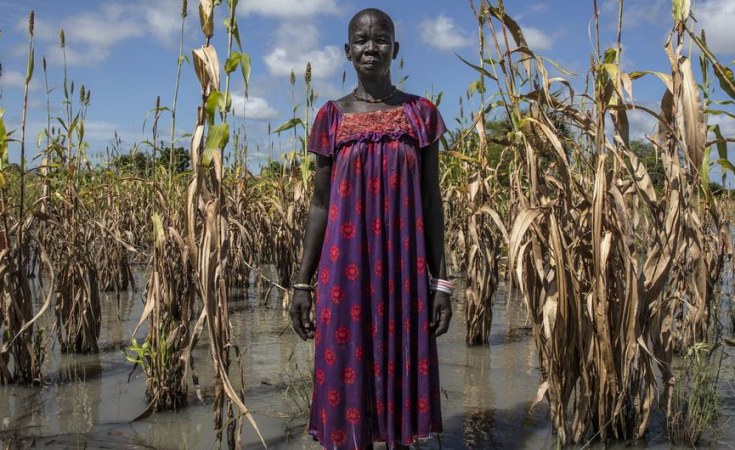As many as 783 million people faced hunger worldwide in 2022 in the wake of the COVID-19 pandemic, repeated weather shocks and conflicts, including in Ukraine, according to a study launched by five United Nations agencies on Wednesday.
The State of Food Security and Nutrition in the World revealed that between 691 and 783 million people faced hunger in 2022, with a mid-range of 735 million, representing an increase of 122 million people compared to 2019. It also adds up to a grim warning, potentially jeopardizing the Sustainable Development Goal of ending hunger.
"Overall, we need an intense and immediate global effort to rescue the Sustainable Development Goals (SDGs). We must build resilience against the crises and shocks that drive food insecurity - from conflict to climate," UN Secretary-General António Guterres said in a video message launching the report.
It shows that hunger rose in Western Asia, Caribbean and across Africa, where one in five people -- more than twice the global average -- faced hunger. Only Asia and Latin America observed progress in improving food security.
In addition to rising hunger, the capacity of people to access healthy diets also deteriorated across the world. More than 3.1 billion people globally unable to afford a healthy diet in 2021, the report issued jointly by the Food and Agriculture Organization (FAO), International Fund for Agricultural Development (IFAD), UN Children's Fund (UNICEF), World Health
Organization (WHO) and World Food Programme (WFP) said.
Malnutrition among children
According to the report, 148 million children under five were stunted (a condition marked by low height per age), 45 million were wasted (low weight), and 37 million were overweight, often an indicator of poor nutrition.
"Malnutrition is a major threat to children's survival, growth and development," UNICEF Executive Director Catherine Russell said.
Children's malnutrition also displays differently in urban and rural settings, the report added, noting that the prevalence of child stunting was higher in the countryside (35.8 per cent) than in urban areas (22.4 per cent).
Similarly, wasting was higher in rural areas (10.5 per cent) compared to urban areas (7.7 per cent), while being overweight is slightly more prevalent in urban areas (5.4 per cent) compared to rural areas (3.5 per cent).
"The scale of the nutrition crisis demands a stronger response focused on children, including prioritizing access to nutritious and affordable diets and essential nutrition services, protecting children and adolescents from nutrient-poor, ultra-processed foods, and strengthening food and nutrition supply chains including for fortified and therapeutic foods for children," Ms. Russell said.


